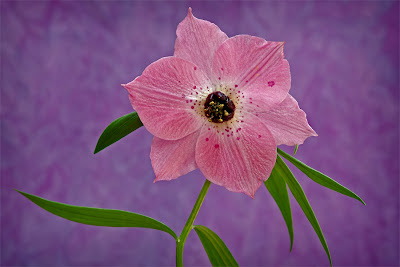 |
| Rhodocoma capensis |
 |
| Restio tetraphyllus |
 |
| Scene of south patio with Cannomois virgata in a pot |
Restios have been an obsession of mine since I first discovered them some 15 years ago upon reading Ken Druse's book 'The Collector's Garden'. There was a photo in that book of Marcia Donahue's famous garden in Berkeley, California and it featured Elegia capensis, one of the restios. At that time I didn't even know there was such a thing as a restio, but I was immediately smitten. So, of course, I was on the hunt to find restios to grow for myself. Today it is not as difficult as it once was to find them, but in those days hardly anyone was growing them and the only place to get them was in California. No mail order nurseries carried them and no local nurseries grew them.
The first restio I ever got was from a great nursery in Oakland called
The Dry Garden. If you are ever in the San Fransisco area be sure and visit this nursery. I have been there 3 or 4 times and have always found wonderful treasures. Anyway, in those early years, The Dry Garden not only carried Elegia capensis, but a number of other different restios. None of them had labels on them, and I was greatly impressed when Richard Ward, the proprietor of the nursery was able to correctly label them even though, to my eye, they all looked alike.
For those new to restios, they are grass or reed like plants, mostly from South Africa, although Restio tetraphyllus, pictured above, is from Australia. They are evergreen and create great textural presence in the garden. However, being from warmer climates than ours, their hardiness has been an issue. I have grown at least 10 different ones, including Restio tetraphyllus, Elegia capensis, Chondropetalum tectorum, Thamnorchortus insignis, Rhodocoma capensis, Rhodocoma gigantea, Ischyrolepis subverticillata, Cannomois virgata, and Rhodocoma arida.
Based on my experience, the best one for our climate is Rhodocoma capensis, seen in the first picture above. I have grown this in several places in my front border for probably 10 years and it has proved hardy. It has never suffered from the cold in that period. It has proved to be both drought tolerant (after it has established itself--it needs summer water the first year after planting) and deer resistant. It looks good all year round. This plant will eventually get quite large. The ones in my garden are at least 6 feet tall and almost as much in diameter. I have seen others buy these plants and plant them in small places or mass them like some grasses are massed. Both of those things are a mistake. These are big plants and they look best in my opinion as specimen plants. If they are massed, one misses seeing the shape of the plant and the individual stems which are interesting in their own right.
Rhodocoma gigantea has also survived long term in my garden. It is not as large a plant as R. capensis, but otherwise looks somewhat similar. The one in my garden is only about 2 feet tall and as wide but I have seen these grown in pots and they were much taller, so maybe the location I have it planted in is hindering its growth.
All the other restios listed above succumbed to the cold one year or another. They do make good pot plants, however, bearing in mind that they get quite large and so require a large pot, and moving large pots inside for winter protection can be a chore. Also, for restios to look good in pots, they need a fair amount of water and they need to be fertilized with a low phosphorous fertilizer. High phosphorous fertilizers will make them yellow and look bad.
Restios require full sun. Otherwise they do not seem to be very particular about soil. They are from areas of South Africa called the fynbos which are characterised by low fertility of soil and open conditions. Apparently many restios grow in areas where there might be seeps or streams, so they do not mind moisture. In fact, I have noticed that they put on new growth here when we have a lot of moisture. A sure way to kill them in a pot is the put them in a greenhouse and forget to water them.
The restio that plant geeks most lust after is Cannomois virgata, the one seen in a pot in the third picture above. Does the fact that I grew it in a pot make me a plant geek? You decide! This one has recently had a change of name and might be called Cannomis grandis now. Whatever. The one that I like the best is Ischyrolepis subverticillata. I once spent a summer trying to learn how to pronounce it. Anyway, I ended up just calling it the puppy dog restio because it was so pettable--the foliage looked like green fur.
Restios are grown by some local wholesalers, including
Xera Plants and
Steamboat Island Nursery.
Cistus Nursery also has them, sometimes in large containers. They can also be grown from seed. The best seed seed sources for them are
Silverhill Seeds in South Africa, and
Seedhunt, a great seed source run by Ginny Hunt near Watsonville, California. Seed of restios germinates after a fire, so scientists have developed what's called smoke packets, to use to mimic the effects of a fire. The good thing about restio seed from Seedhunt is that they supply you with the smoke packets when you buy seed from them. Restios will germinate without the smoke packets, but they germinate in much greater numbers with the smoke.











































